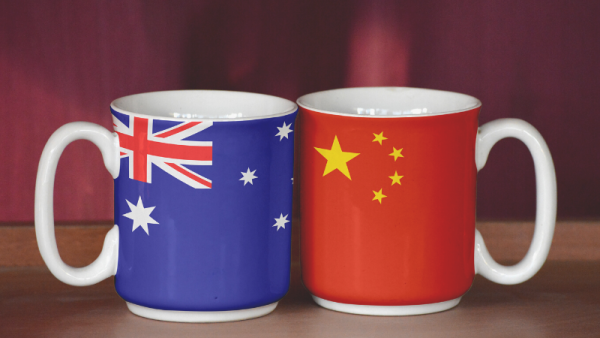Perspectives | Australian racism a vulnerability to the PRC’s influence operations
Aritra Deb / Shutterstock

Joyce Nip, Associate Professor of Chinese media studies, University of Sydney |
Perspectives is UTS:ACRI's monthly commentary series, featuring a piece on a topical subject in the Australia-China relationship from an invited expert contributor.
Amid growing concerns that the People’s Republic of China (PRC) is interfering in Australia in ways that may damage Australia’s national interest, the PRC’s influence operations targeting people of Chinese heritage in the country have come under the spotlight.
Discussion on these operations often focuses on the propagandistic potential of Chinese-language media in Australia and the ‘united front’ work of the Chinese Communist Party (CCP). However, little reflected upon is who the targets of these operations are, and what conditions affect their success.
A moment of critical thinking could help allay unnecessary fear and inform an effective response.
Most often people of Chinese heritage are referred to as ‘the Chinese diaspora’ as if they were homogeneous. They are not.
Ethnic Chinese people from Taiwan, Hong Kong, Southeast Asia and mainland China often differ in political values and popular cultures. They also speak and write different Chinese languages to various extents. Even among those who originate from mainland China, the group which forms the biggest share of people with Chinese heritage in Australia, short stayers who come to study, work, or reside permanently, who bring their Mandarin language and social networks with them, are very different from those who are born in Australia to mainland Chinese parents, educated here as native English speakers, who often can speak but rarely can read or write Mandarin beyond an elementary level.
Given these factors, the potential audience of Chinese-language media based in Australia is most likely the short stayers and migrants from mainland China, although many of them are also likely to continue consuming domestic Chinese media via the internet.
Most Chinese-language media outlets in Australia are under the ownership control of, or in partnership with, media outlets in mainland China. Such controls have ensured that their content does not include any material critical of the CCP.
If these PRC-compliant Chinese-language media outlets in Australia only reach sojourners and first-generation migrants from mainland China, their existence is little more than an extension of domestic media in the PRC carrying a consistent ideology while providing news helpful for newcomers to navigate life in a foreign country.
Propaganda is less likely to influence the audience when alternative information is provided. The uncensored information environment of Australia, in which information and opinions that differ from the PRC-sanctioned version are readily available in Chinese-language outlets such as SBS, Voice of America, Radio Free Asia, and Vision Times, would suggest that the influence of PRC-compliant media over Chinese-language readers in Australia pale in comparison to that of their domestic Chinese counterparts over readers in mainland China.
Surely this point is not lost on the CCP. Indeed, among the targets of its ‘overseas united front’ work are ‘people who study abroad and have returned from study abroad.’ Among others, the CCP’s united front work seeks to ‘cultivate understanding of and identification with the Chinese Communist Party and socialism with Chinese characteristics’ and ‘suppress separatist forces such as Taiwan independence’—as stipulated in the amended version of the Regulation of United Front Work of the Communist Party of China released earlier this year.
In the present ideological rivalry between the PRC and the West, the large numbers of international students from the PRC risk being trapped from both sides: On the one hand, Australia may see them as indoctrinated by Beijing’s propaganda, while on the other hand, the PRC is suspicious that they are corrupted by Western ideas in the ‘complicated, intense struggle’ with Western ideology.
This conundrum suggests that Australia is not merely at the receiving end of the PRC’s propaganda. It is positioned to respond proactively to PRC propaganda.
In the sphere of ideological competition, the PRC’s media influence enjoys an advantage through interpersonal connections, as media often impacts the audience in a two-step process through opinion leaders, who select and interpret media messages for their peers. The social networks in which mainland Chinese short stayers and migrants are embedded, and new connections built by CCP’s overseas united front work organisations and activities are where opinion leadership could sway.
This is where WeChat, the wildly popular Chinese social media platform, raises the concern that it can be used as a tool for such purpose.
The PRC’s advantage in social networking also applies to second generation Australian-Chinese but naturally to a lesser extent: Children of mainland Chinese parents would come under the influence of opinions and values of their parents, relatives, and community groups that may be in line with CCP positions. Yet at the same time, second generation Australian-Chinese are educated on Australian values through connections in schools at the least as well as from mainstream Australian media.
While the CCP lists ‘Chinese citizens who reside in host countries permanently’ (hua qiao) as a target of its united front work, second generation Australian-Chinese, who fall under the category of Chinese with a foreign nationality (wai ji hua ren), are not listed as a target group except when they resume or are given Chinese nationality and register to live in China (gui qiao). The dual heritage of second generation Australian-Chinese, however, renders them a cohort pulled by two cultures.
Treating second-generation Australian-Chinese as Chinese alienates them from mainstream Australian society and pushes them closer to their Chinese cultural identity. Failure to appreciate differences within the Chinese diaspora reinforces the PRC-centred narrative.
An area in which Australia enjoys a comparative advantage in the sphere of ideological competition is with respect to values: respect, freedom, rule of law, democracy, equality of opportunity, and fairness are attractive ideals. For these values to resonate, however, they need to be implemented in practice.
First-hand experiences of racial stereotyping, abuse, and outright attacks recounted by Asian-Australians in the anti-Asian hate vigil held outside Sydney’s Customs House on April 23 are sad reminders that respect and equality of opportunity at times remain ideals beyond reality.
The history of the invasion of Australia by white European settlers and the subjugation of Indigenous Australians and forcible takeover of their land is another unresolved issue that makes many Australian values ring hollow.
As the number of racial attacks reported in Australia during the COVID-19 pandemic increases, PRC officials have warned Chinese students of the risks of studying in racist Australia. Organisations supportive of Beijing are also spreading the message of the CCP that the geopolitical contest led by the US against China is anti-China racism: A leaflet distributed at the April 23 anti-Asian hate vigil read, ‘Oppose the cold war campaign against socialistic China that goes hand in hand with anti-Asian violence.’
It is easy to dismiss the PRC’s rhetoric on racism in Australia as mere propaganda given there are any number of success stories of ethnic Asians in Australia to counter the point. However, classing the issue as a ‘Beijing talking point’ does a disservice to Australia’s ethnically Asian community. While the ubiquity of experiences of racism by Australia’s ethnically Asian community is only beginning to be charted, it is likely safe to say that every person of Asian appearance would have encountered racism in Australia at some point of their lives.
As such, the power of anti-racism rhetoric on mainland Chinese people should not be underestimated. Its power was first demonstrated in the ignition of Chinese nationalism after the 1919 Treaty of Versailles, which soon saw the formation of the CCP.
So long as racism remains a blind spot in Australia and the vestiges of the White Australia policy are still evident, it will be a vulnerability exploitable by PRC influence operations.
Author
Dr Joyce Nip is Associate Professor of Chinese media studies at the University of Sydney.

